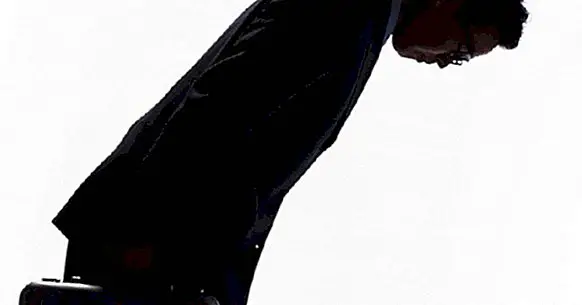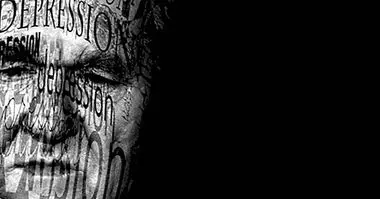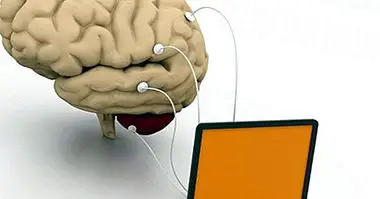Taijin Kyofusho (phobia to be a nuisance): symptoms and treatment
Communicating with our peers is something very important for the human being, being in fact one of the bases that has allowed the development and evolution of our species. It is something complex that is subject to the interpretation of both words and acts, and that can sometimes be judged.
Sometimes fears or even phobias can appear in this sense, some of them influenced by the mentality of certain cultures and groups. This is the case of the syndrome known as Taijin Kyofusho , which we are going to talk about next.
- Related article: "Types of phobias: exploring the disorders of fear"
Taijin Kyofusho: what is this mental alteration?
It receives the name of Taijin Kyofusho an alteration or psychological condition characterized by the presence of a disproportionate and irrational fear that the own communicative acts, our body or physiological reactions be noticed, judged and considered uncomfortable or annoyed by other people .
It is a kind of phobia very similar to social phobia, which until recently It has been considered a cultural syndrome of Japan and to a lesser extent Korea . However, at present it has been observed that similar alterations exist in other parts of the world, and that some of its variants may correspond to other problems.
symptom
The possibility that other people feel discomfort or annoyance to different aspects of meeting or interaction with them generates a very high level of panic and anxiety , also being able to generate physiological reactions such as tachycardia, hyperventilation, sweating, nausea and vomiting. It also usually generates an avoidance of contact with others, or the use of mechanisms such as masks to avoid exposure of aspects such as breath or smile.
Types
Taijin Kyofusho is a general concept that encompasses the fear that our exposure to society may be a nuisance, but that it usually includes four more specific subcategories.
1. Sekimen-kyofu
This term refers to the phobia turn red in public and make it somewhat uncomfortable for everyone else.
2. Shubo-kyofu
In this case, the phobia is linked to the perception of one's body as something deformed or dissatisfied with one's body: it is the phobia that the vision of our body or figure is annoying or uncomfortable.
3. Jikoshisen-kyofu
This phobia refers to the phobia of maintaining eye contact, something that generates panic at the idea of the discomfort that can represent .
4. Jikoshu-kyofu
Body odor is in this case the stimulus that generates panic anxiety, or rather the idea that it can generate discomfort in others.
Difference with conventional social phobia
The truth is that the Taijin Kyofusho could be considered a variant of social phobia , since they are deeply linked and based on the panic to expose themselves socially.
However, there are some nuances that make us talk about a differentiated variant: in social phobia panic is to be judged negatively while in this variant of fear is more linked to being a nuisance to others.
Also, typical components that could be identified with other phobias such as erythrophobia can also be found.
Causes of this alteration
The causes of taijin kyofusho syndrome are not yet fully known, especially considering how specific it has been until recently.
However, as a social phobia variant it is possible to establish hypotheses about it. It is considered that it can be product of previous traumatic experiences during development and early socialization , perhaps being the subject scolded or marginalized by any of the above aspects (especially by parents, couples or friends circles or in general by highly significant persons), considering themselves inadequate or incompetent having a low self-esteem or having observed how someone was judged by some of the aforementioned phobic stimuli.
It is also associated with a lack or limitation of opportunities for normative social interaction. It is also associated with timid and inhibited personalities, or extremely self-controlled.
The reason that the Taijin Kyofusho is so relatively frequent in Japan and Korea, and that in fact has led to its consideration as a culture-dependent syndrome, is due to the kind of thinking and mentality of those cultures. In fact, it has been observed a higher prevalence in collectivist cultures as those already mentioned, since in them there is a much greater tendency than in the individualists to generate personal identity based on social consideration.
It can also be derived from the high level of social demand maintained by companies such as Japan, with very high demands and expectations for all its citizens.
Treatment
The taijin kyofusho is a problem of phobic type that, like the rest of phobias, can be treated.
In the first place, it would be necessary to analyze which stimuli generate fear, the significance that the subject gives, when the phobia originated and why the person who appeared appeared. It would also be necessary to assess the contexts in which it usually appears, if there are some in which it does not and the difficulties that it generates to the person on a day-to-day basis. Also what importance is given to socialization, what it would mean to be a nuisance to others or why do you think it could be.
Done this, one of the most common therapies is exposure therapy , in which little by little and in a graduated way, the subject is exposed to a series of situations to face the anxiety. First, a hierarchy of exposure would be made with the patient and, little by little, the exposures would be made, each item being carried out until in at least two successive exposures the anxiety is reduced significantly before moving on to the next.
At the same time, the set of beliefs could be worked on with respect to oneself, society or the way of interacting with it through techniques such as cognitive restructuring. The objective would be to generate more adaptive interpretations of reality than the original ones, linked to the idea of the negative effects of one's presence on others. It would also have to try to lower self-demand and the importance given to the expectations that are considered to be had about us.
In severe cases, the use of pharmacological treatment may be required in order to reduce the level of anxiety while learning to manage it.
Bibliographic references:
- Suzuki, K., Takei, N., Kawai, M., Minabe, Y. and Mori, N. (2003). Is Taijin Kyofusho a Culture-Bound Syndrome ?. The American Journals Psychiatry office.
- Takahaski, T. (1989). Social phobia syndrome in Japan. I bought Psychiatry, 30: 45-52.
- Vriends, N., Pfaltz, M.C., Novianti, P. & Hadiyono, J. (2013). Taijin Kyofusho and Social Anxiety and Their Clinical Relevance in Indonesia and Switzerland. Front Psychol. 2013; 4: 3



















